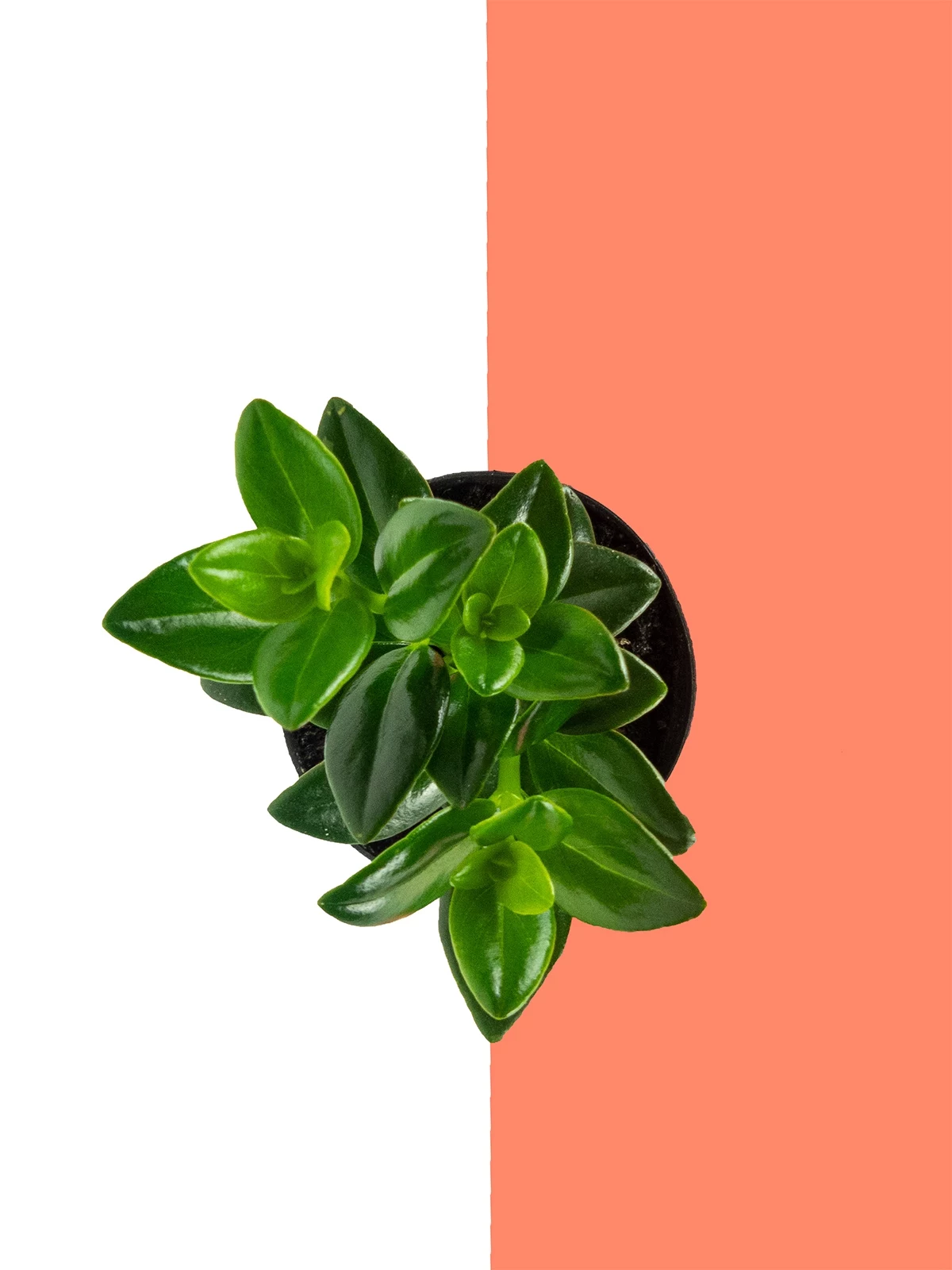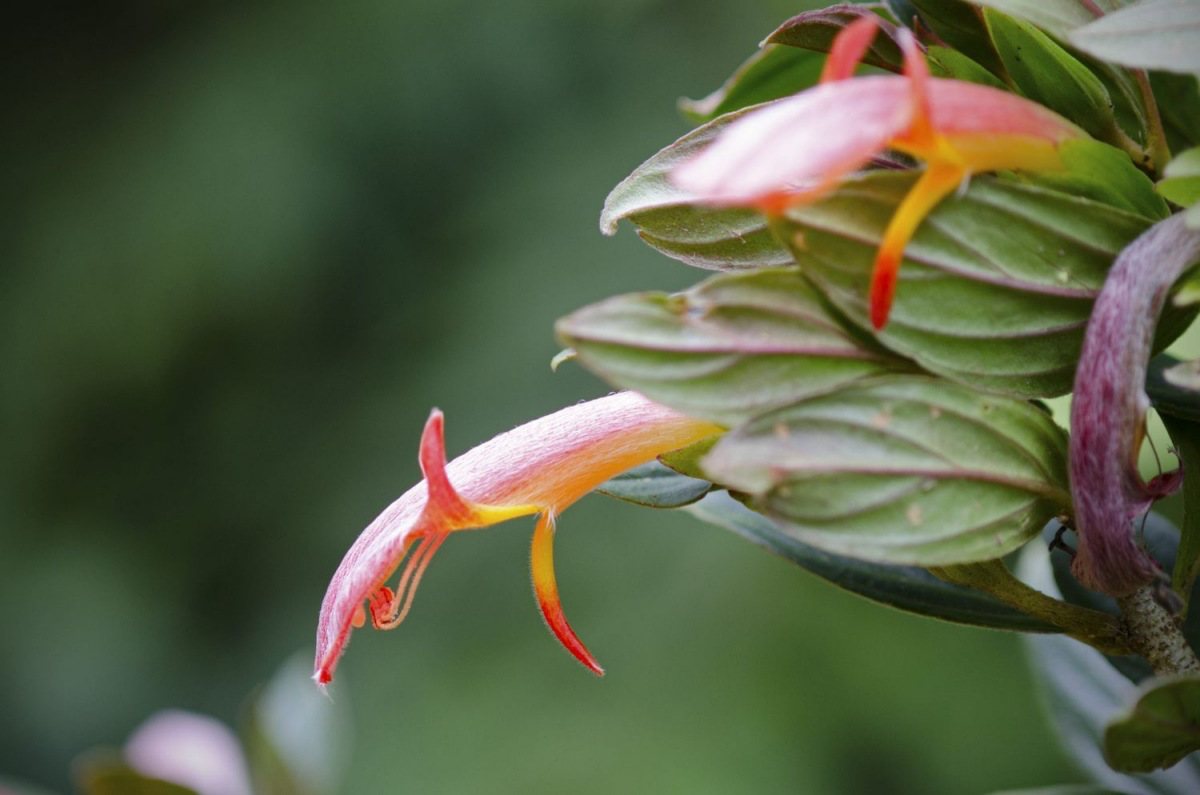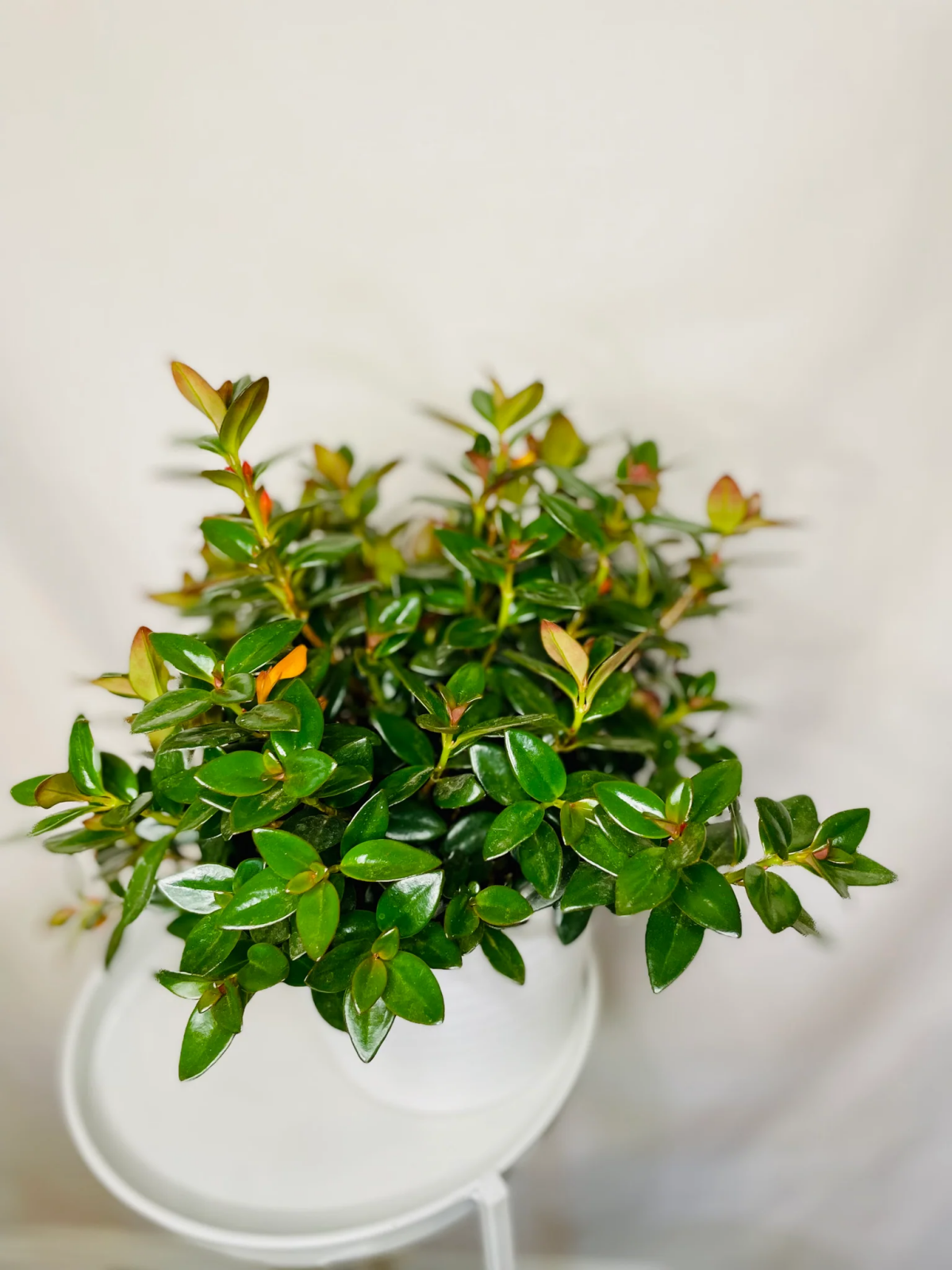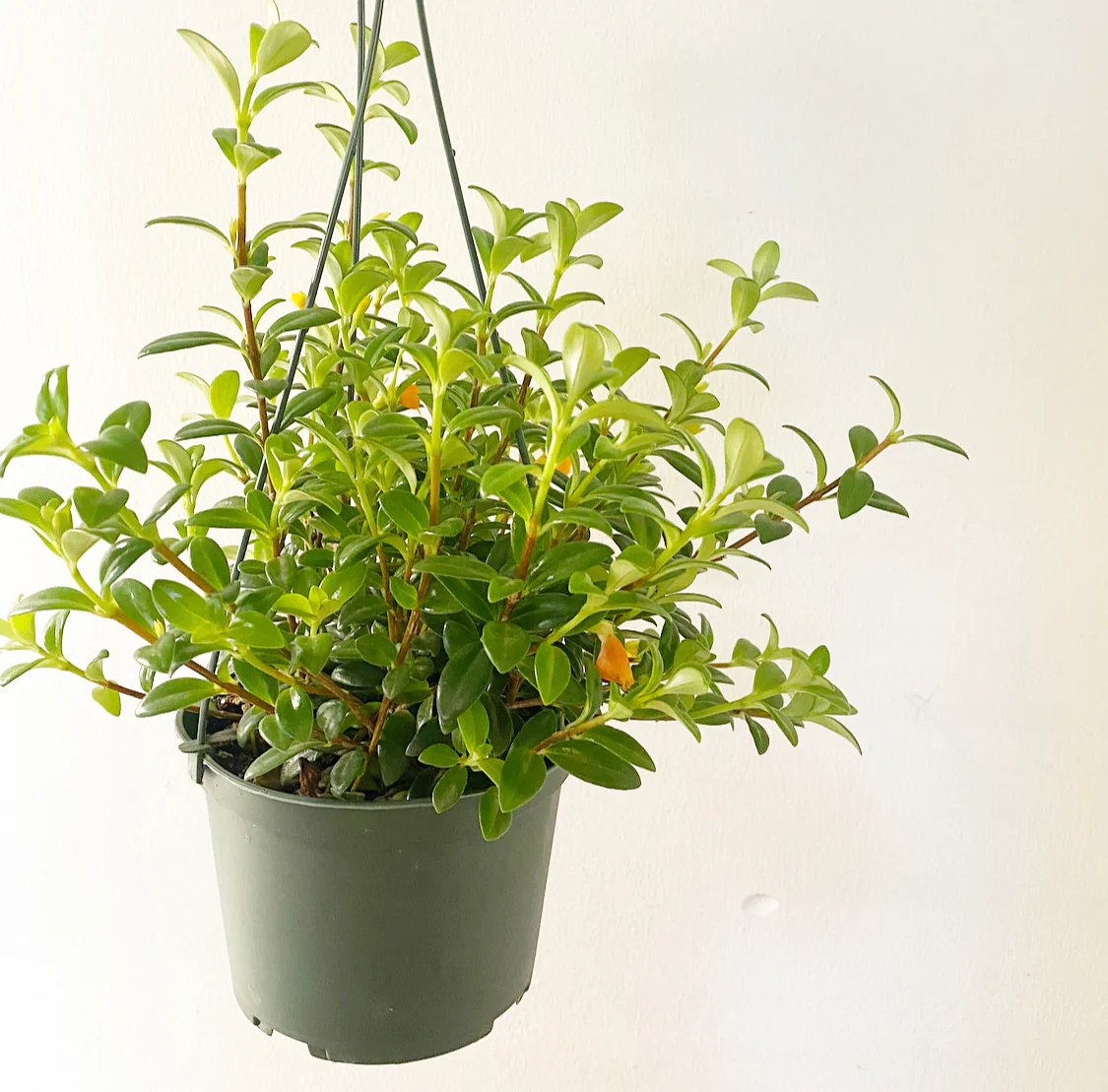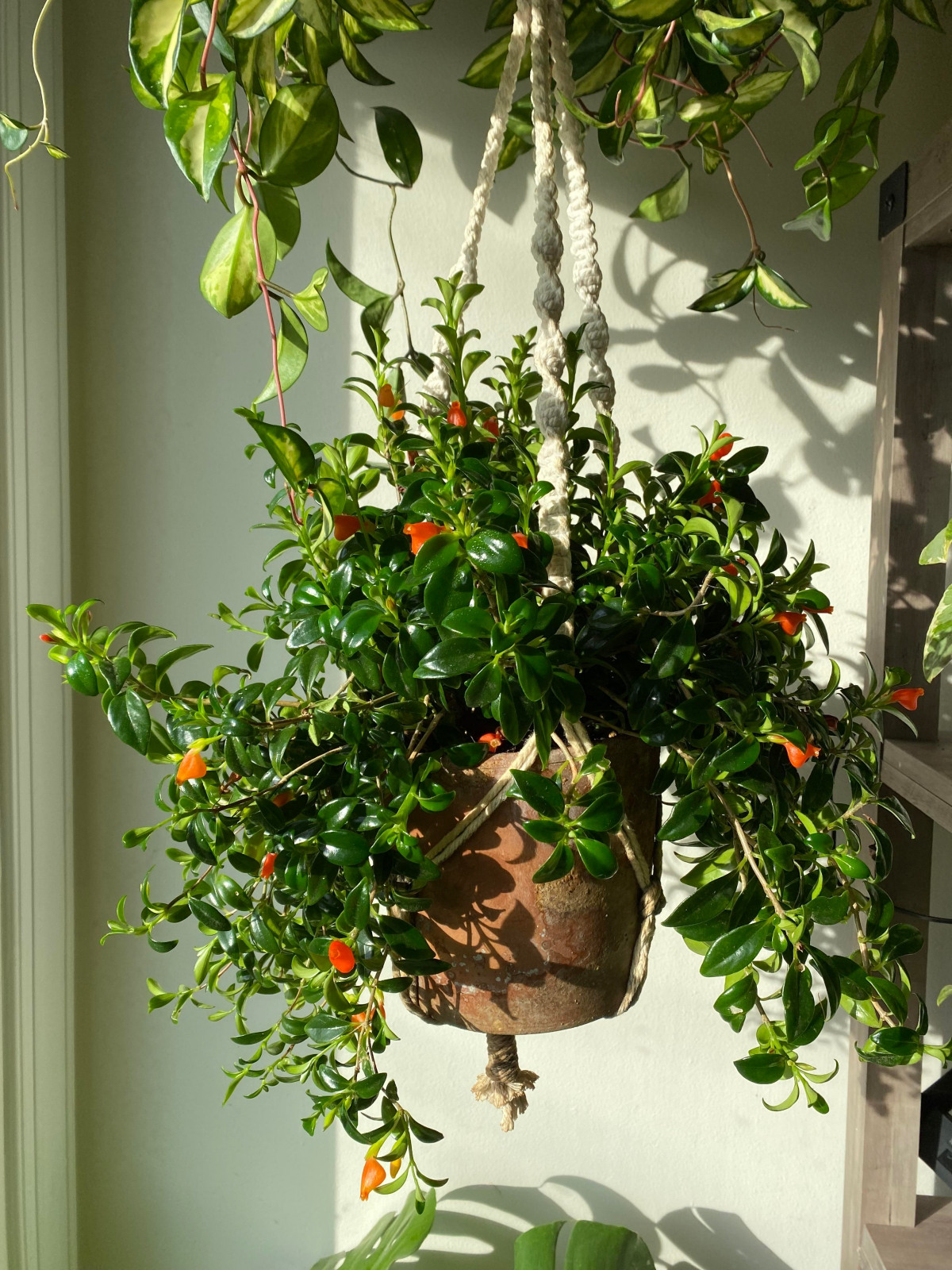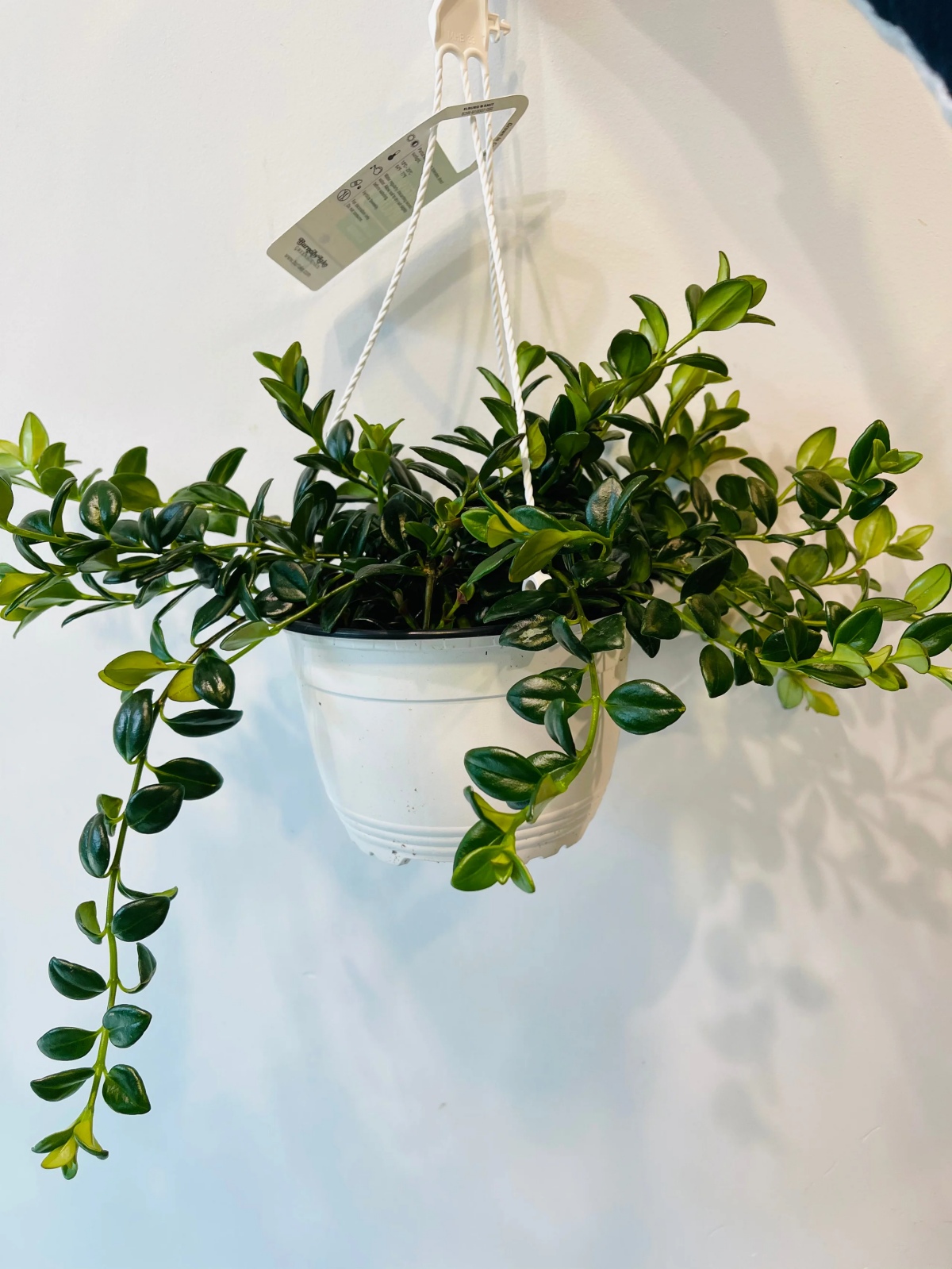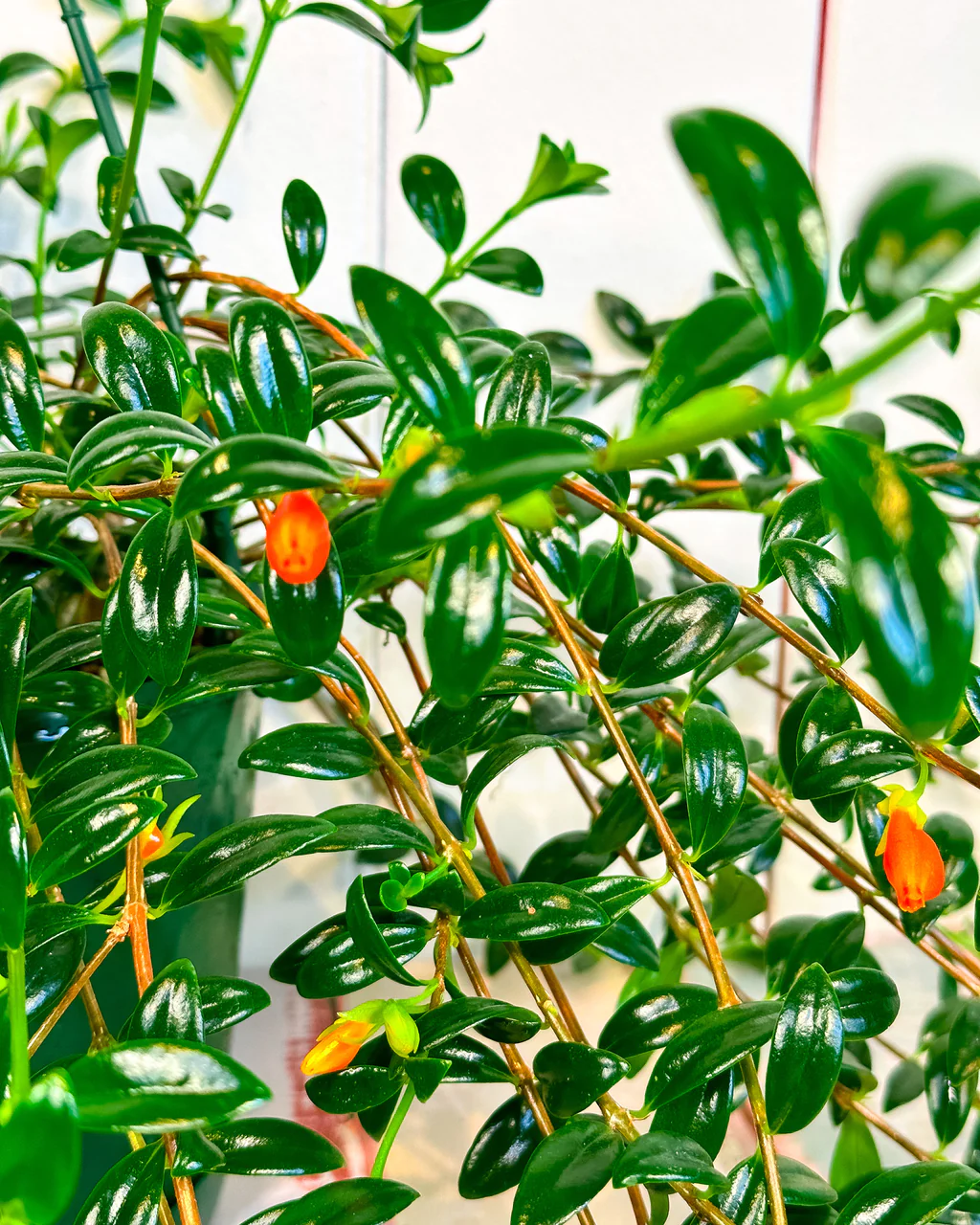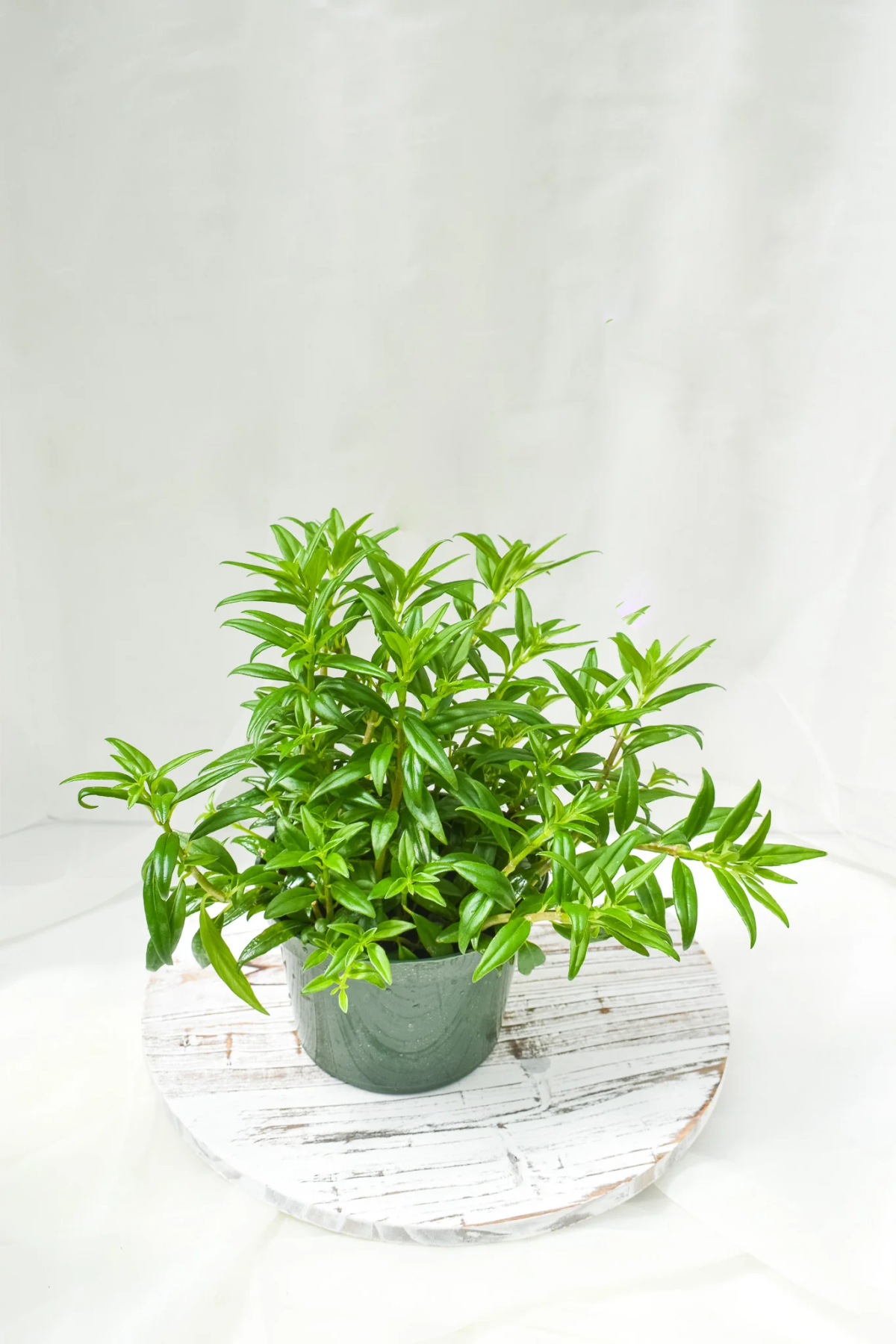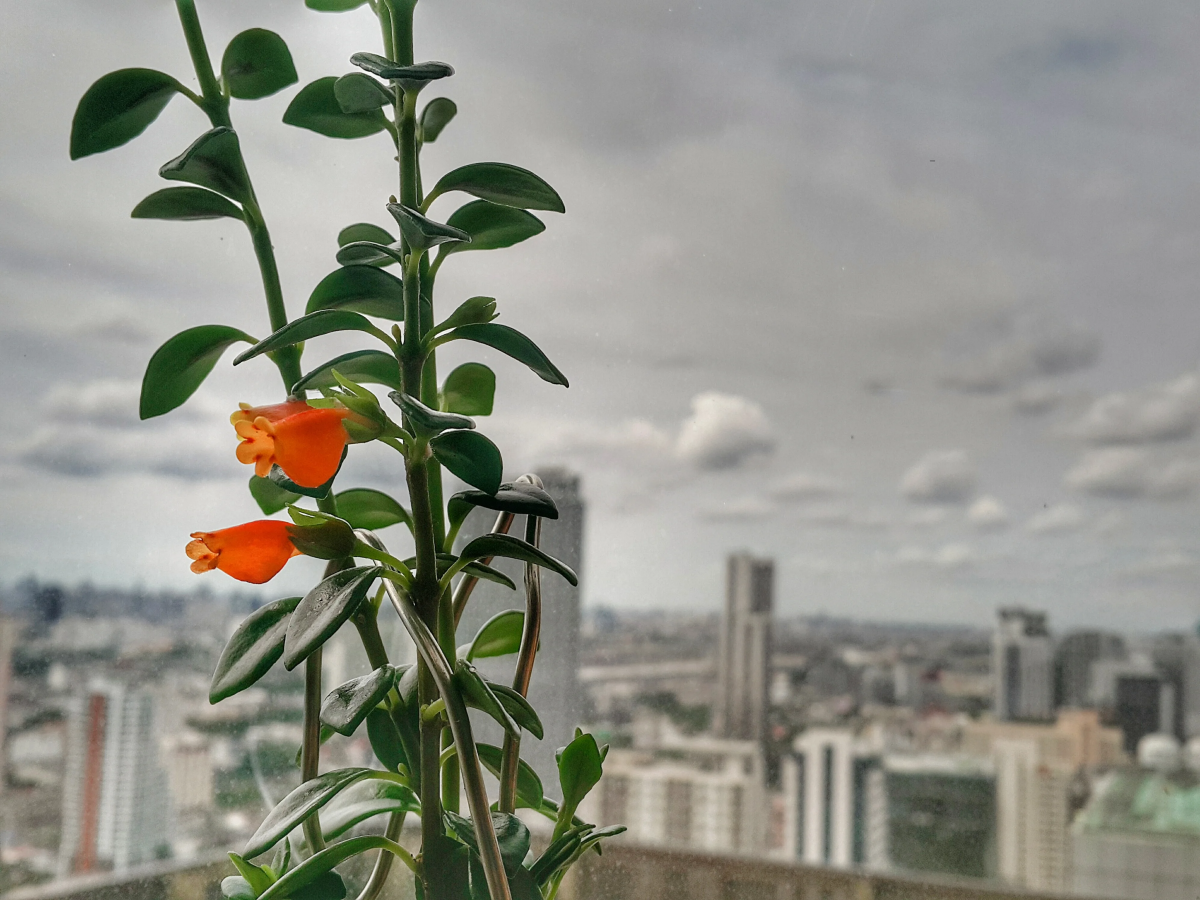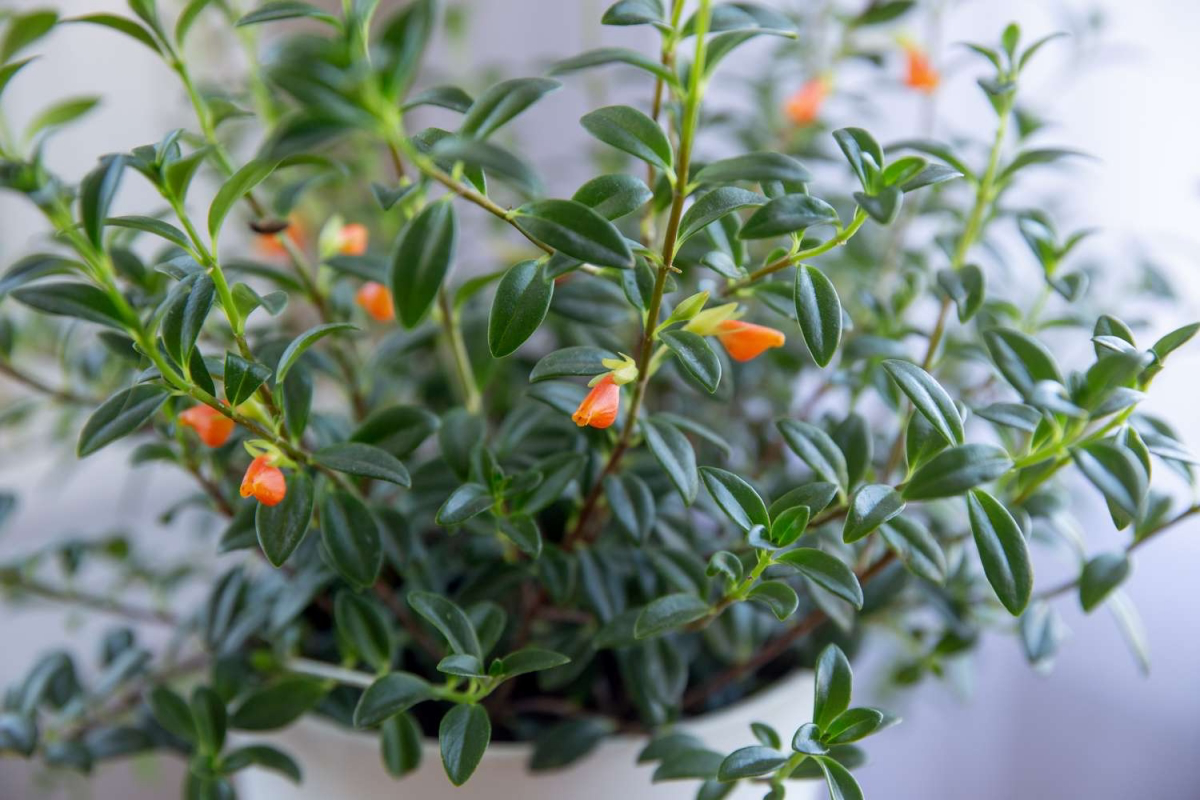The Enchanting Goldfish Plant: How to Care for This Tropical Plant
In the enchanting realm of indoor gardening, there exists a unique and captivating gem – the Goldfish Plant. With its striking, vibrant blooms resembling leaping goldfish, this charming botanical wonder adds a touch of whimsy and elegance to any home. Join me, Maria Konou, on an exploration of Goldfish Plants and uncover the secrets to nurturing these delightful companions.
Let’s dive into the mesmerizing world of the Goldfish Plant with this guide
In this article
What is a Goldfish Plant?
Welcome to the enchanting world of Goldfish Plants, where botanical wonder meets artistic elegance. Scientifically known as Nematanthus, this captivating genus of tropical flowering plants has taken root in the hearts and homes of plant enthusiasts worldwide. Native to the lush landscapes of Central and South America, these remarkable plants have transcended borders and now thrive as cherished members of our indoor gardens. Imagine a burst of vibrant colors and a form so unique it mimics the grace of aquatic life. Goldfish Plants have earned their moniker from their distinct, fish-shaped flowers that appear to swim in a sea of green foliage. Their blossoms, which come in a spectrum of fiery oranges, deep reds, and sunny yellows, evoke a sense of tropical splendor that can transform any living space into a paradise.
This plant is native to the lush landscapes of Central and South America
From Rainforests to Living Rooms
Goldfish Plants hail from the rainforests and tropical regions of Central and South America, where they have thrived for centuries in the dappled sunlight beneath the dense canopy. It is in these lush and biodiverse ecosystems that their charming blooms first captivated the attention of explorers and botanists. Today, the magic of Goldfish Plants has transcended geographical boundaries. These plants have found their way into homes worldwide, their elegant foliage and vibrant blooms breathing life into our living spaces. Whether perched on a windowsill, adorning a coffee table, or hanging gracefully in a decorative planter, Goldfish Plants have become a beloved choice for indoor gardeners seeking a touch of the exotic.
These plants have thrived for centuries in the dappled sunlight beneath the dense canopy
Types of Goldfish Plants
Goldfish Plants encompass various species and hybrids, each with its unique characteristics. Some popular types include:
- Nematanthus gregarius: Known for its vibrant orange blossoms, this species is a favorite among Goldfish Plant enthusiasts.
- Nematanthus wettsteinii: Recognizable by its bright yellow flowers, it adds a splash of sunshine to your home.
- Nematanthus fissus: Its trailing vines and charming orange blooms make it a lovely choice for hanging baskets.
- Nematanthus ‘Tropicana’: With variegated leaves and orange flowers, it’s a striking choice for plant collectors.
There is a great variety of Goldfish plants to choose from
Who Should Get a Goldfish Plant?
Goldfish Plants are an enchanting botanical option that can brighten up any home. Their unique characteristics and charming appearance make them a top choice for a variety of plant enthusiasts. Let’s dive into who would find these remarkable plants a perfect addition to their indoor garden:
- Indoor Garden Enthusiasts: If you’re passionate about cultivating an indoor oasis of greenery, Goldfish Plants are an ideal choice. Their striking appearance and vibrant blooms add a touch of exotic allure to your collection, making them a standout feature in your indoor garden.
- Lovers of Low-Maintenance Elegance: Goldfish Plants may appear exotic, but they’re surprisingly low-maintenance. For individuals with busy schedules or those new to plant care, these resilient plants offer an opportunity to enjoy the rewards of gardening without constant attention.
- Exploration-Oriented Plant Enthusiasts: If you’re the type of plant enthusiast who loves exploring different species and nurturing a diverse range of green companions, Goldfish Plants are an exciting addition to your botanical journey. Their unique genus, Nematanthus, presents a captivating branch of the plant kingdom to discover and appreciate.
- Admirers of Exotic Blooms: The most striking feature of Goldfish Plants is their vibrant and exotic-looking flowers. If you’re someone who appreciates the beauty of unique and captivating blooms adorning your living space, these plants will undoubtedly steal your heart.
Goldfish Plants have the remarkable ability to cater to a wide range of tastes and preferences, making them a versatile and delightful choice for anyone looking to enhance their home with a touch of natural elegance. Whether you’re an avid indoor gardener, a busy professional, a plant explorer, or simply someone who appreciates the beauty of exotic flowers, these charming plants have something special to offer.
This houseplant is perfect for individuals with busy schedules or those new to plant care
Benefits of Owning a Goldfish Plant
Beyond their stunning aesthetics, Goldfish Plants boast a myriad of advantages that make them a cherished addition to any indoor garden. Let’s explore the delightful benefits of welcoming these tropical wonders into your home:
- Visual Splendor: At the heart of Goldfish Plants’ allure lies their extraordinary, fish-shaped flowers. These distinctive blooms come in a captivating array of colors, from fiery oranges and deep reds to sunny yellows. Their whimsical form and vibrant hues infuse your living space with an enchanting charm that captivates the eye. Whether perched on a windowsill, cascading from a hanging planter, or adorning a tabletop, Goldfish Plants elevate the visual appeal of any room.
- Low Maintenance Elegance: Goldfish Plants are renowned not only for their beauty but also for their low-maintenance nature. Their adaptability and resilience make them an excellent choice for both novice and experienced gardeners. These plants require minimal fuss, making them a delightful addition to homes where time and attention are precious commodities. With a little care and affection, Goldfish Plants flourish, gracing your indoor garden with their unique charm.
- Air Purification: Like many houseplants, Goldfish Plants play a role in enhancing indoor air quality. They act as natural air purifiers, absorbing harmful pollutants from the atmosphere and releasing oxygen in return. By choosing Goldfish Plants, you not only elevate the aesthetics of your home but also contribute to a healthier living environment. Inhale deeply, and let the purity of your indoor oasis rejuvenate your senses.
- Natural Stress Relief: The soothing presence of indoor plants, including Goldfish Plants, can work wonders for your well-being. Studies have shown that the company of green companions can reduce stress levels, promote relaxation, and enhance mental health. As you nurture your Goldfish Plants, you’ll find solace in their lush foliage and captivating blooms.
- Unique Blooms: Goldfish Plants are more than just houseplants; they are conversation starters and objects of curiosity. When guests step into your home and encounter their fish-shaped flowers, intrigue takes root. These remarkable blooms spark questions, anecdotes, and a sense of wonder. As you regale your visitors with tales of your Goldfish Plants, you share not just your passion for gardening but also a piece of the enchanting natural world.
Their adaptability and resilience make them an excellent choice for novice gardeners
Who Should Avoid This Plant?
While Goldfish Plants are a joy to nurture, there are a few considerations for potential owners:
- Pet Owners: Some pets may be attracted to the unique shape and vibrant colors of Goldfish Plant blooms. It’s essential to keep them out of reach to prevent any unwanted nibbling.
- Homes with Extremely Low Light: Goldfish Plants thrive in moderate to bright, indirect light. Homes with minimal natural light may not provide the optimal conditions for their growth.
- Individuals with Pet Allergies: Like many houseplants, Goldfish Plants can occasionally attract pests. If you have allergies to certain pests or are highly sensitive, consider this before bringing them into your home.
Homes with minimal natural light may not provide the optimal conditions for this plant
Is a Goldfish Plant Hard to Take Care Of?
Goldfish Plants are generally considered low-maintenance, making them suitable for both novice and experienced plant parents. However, they do have specific care requirements that should be taken into account to ensure their well-being. Let’s delve into the details of Goldfish Plant care:
These plants have specific care requirements that should be taken into account
How to Take Care of a Goldfish Plant
Watering
Goldfish Plants have specific watering needs that must be attended to carefully:
- Consistent Moisture: Maintain the soil consistently moist, but avoid making it soggy. To check if it’s time to water, insert your finger into the soil; if the top inch feels dry, it’s time to water.
- Prevent Overwatering: One common mistake is allowing the plant to sit in standing water, which can lead to root rot. Always ensure proper drainage to avoid waterlogged soil.
- Ideal Water Temperature: Use room-temperature water when watering your Goldfish Plant. Using water that is too cold can shock the plant, leading to stress.
Always ensure proper drainage to avoid waterlogged soil
Light
Proper lighting is crucial for the health and vibrancy of your Goldfish Plant:
- Indirect Sunlight: Goldfish Plants thrive in bright, indirect sunlight. Avoid exposing them to direct sun, which can scorch their delicate leaves.
- Ideal Placement: Placing your Goldfish Plant on a well-lit windowsill or a few feet away from a window with sheer curtains provides the perfect amount of filtered sunlight.
- Rotate for Even Growth: To ensure your plant grows evenly and doesn’t lean towards the light source, rotate it occasionally.
Goldfish Plants thrive in bright, indirect sunlight
Temperature
Maintaining the right temperature range is essential for your Goldfish Plant’s well-being:
- Temperature Range: Keep your Goldfish Plant in an environment with a temperature between 65°F to 80°F (18°C to 27°C). Sudden temperature fluctuations, drafts, or exposure to cold air from heating or air conditioning vents should be avoided to prevent stress on the plant.
Avoid sudden temperature fluctuations, drafts, or exposure to cold air
Fertilization
Proper feeding during the growing season is crucial for the health of your Goldfish Plant:
- Balanced Fertilizer: Use a balanced, water-soluble fertilizer every 4-6 weeks during the growing season, which typically spans from spring to early autumn.
- Dormant Season: Reduce fertilization during the dormant season, which occurs in late autumn and winter.
Use a balanced, water-soluble fertilizer every 4-6 weeks
Placement
Choosing the right spot for your Goldfish Plant can make a significant difference in its growth:
- Bright, Filtered Sunlight: Place your Goldfish Plant in a location with bright, filtered sunlight. They thrive in moderate light conditions.
- Avoid Low Light: Avoid placing your plant in dark corners or areas with excessively low light, as this can lead to leggy growth.
Avoid placing your plant in dark corners
Humidity
Maintaining proper humidity levels is essential for the health of your Goldfish Plant:
- Increase Humidity: Goldfish Plants appreciate higher humidity levels. You can elevate humidity by misting the leaves regularly or using a humidity tray.
- Prevent Brown Tips: Adequate humidity helps prevent the development of brown leaf tips, which can occur in dry indoor conditions.
Goldfish Plants appreciate higher humidity levels
Soil
Choosing the right soil mix is essential for proper drainage and root health:
- Well-Draining Mix: Use a well-draining potting mix designed for African violets or gesneriads. These mixes promote proper aeration and drainage.
- Drainage Holes: Ensure that the pot you choose has drainage holes to prevent overwatering and root rot.
Use a well-draining potting mix designed for proper aeration and drainage
Type of Pot
Selecting the right pot is important for maintaining your Goldfish Plant’s health:
- Drainage Holes: Always choose a pot with drainage holes to prevent waterlogged soil, which can lead to root problems.
- Decorative Containers: If you prefer decorative containers without drainage, be cautious not to overwater, as excess moisture can damage the roots.
Always choose a pot with drainage holes to prevent waterlogged soil
Repotting
Occasional repotting is necessary to accommodate your growing Goldfish Plant:
- Frequency: Young Goldfish Plants may require repotting every 1-2 years to accommodate their growth. Spring is the ideal season for repotting if needed.
- Pot Size: When repotting, select a pot that is approximately 2 inches larger in diameter than the current one to provide ample room for root growth.
Young Goldfish Plants may require repotting every 1-2 years
Propagation
You can expand your collection of Goldfish Plants through propagation:
- Stem Cuttings: Propagate Goldfish Plants by taking healthy stem cuttings with a few leaves and placing them in well-draining soil to root. Spring or early summer is the best time for propagation.
You can propagate Goldfish Plants by taking healthy stem cuttings
Pests
While Goldfish Plants are generally pest-resistant, occasional infestations may occur:
- Vigilant Inspection: Regularly inspect your plant for potential pests like spider mites or aphids.
- Prompt Action: If pests are detected, address them promptly with neem oil or insecticidal soap to protect your plant’s health and vitality.
Regularly inspect your plant for potential pests like spider mites or aphids
With proper care and attention to these essential aspects of Goldfish Plant care, you can ensure that your plant thrives and graces your space with its unique charm and vibrant blooms.
Conclusion
In the realm of indoor gardening, Goldfish Plants shine as unique, captivating companions. Their distinctive blooms and low-maintenance nature make them a delightful addition to any home. Whether you’re an experienced plant enthusiast or a beginner looking to cultivate your green thumb, these charming plants offer a rewarding journey into the world of botanical beauty. By understanding their care requirements and providing a loving environment, you can watch your Goldfish Plant flourish and grace your space with its enchanting presence.
Now you know how to take care of this exotic houseplant!
More Articles You Might Like
- The Ficus Tree Unveiled: How to Take Care of This Indoor Beauty
- The Polka Dot Begonia Handbook: Complete Plant Care Guide
- The Benefits of Taking Care of a Bamboo Plant: Complete Guide
